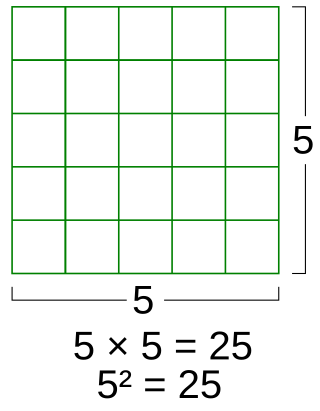In abstract algebra, an alternative algebra is an algebra in which multiplication need not be associative, only alternative. That is, one must have
In mathematics, especially functional analysis, a Banach algebra, named after Stefan Banach, is an associative algebra over the real or complex numbers that at the same time is also a Banach space, that is, a normed space that is complete in the metric induced by the norm. The norm is required to satisfy
In mathematics, the concept of an inverse element generalises the concepts of opposite and reciprocal of numbers.
In abstract algebra, a magma, binar, or, rarely, groupoid is a basic kind of algebraic structure. Specifically, a magma consists of a set equipped with a single binary operation that must be closed by definition. No other properties are imposed.
In algebra, a unit or invertible element of a ring is an invertible element for the multiplication of the ring. That is, an element u of a ring R is a unit if there exists v in R such that
In mathematics, a Lie superalgebra is a generalisation of a Lie algebra to include a ‑grading. Lie superalgebras are important in theoretical physics where they are used to describe the mathematics of supersymmetry.
In mathematics, a Poisson algebra is an associative algebra together with a Lie bracket that also satisfies Leibniz's law; that is, the bracket is also a derivation. Poisson algebras appear naturally in Hamiltonian mechanics, and are also central in the study of quantum groups. Manifolds with a Poisson algebra structure are known as Poisson manifolds, of which the symplectic manifolds and the Poisson–Lie groups are a special case. The algebra is named in honour of Siméon Denis Poisson.
In mathematics and theoretical physics, a superalgebra is a Z2-graded algebra. That is, it is an algebra over a commutative ring or field with a decomposition into "even" and "odd" pieces and a multiplication operator that respects the grading.

In mathematics, a square is the result of multiplying a number by itself. The verb "to square" is used to denote this operation. Squaring is the same as raising to the power 2, and is denoted by a superscript 2; for instance, the square of 3 may be written as 32, which is the number 9. In some cases when superscripts are not available, as for instance in programming languages or plain text files, the notations x^2 (caret) or x**2 may be used in place of x2. The adjective which corresponds to squaring is quadratic.
In mathematics, a Poisson superalgebra is a Z2-graded generalization of a Poisson algebra. Specifically, a Poisson superalgebra is an (associative) superalgebra A together with a second product, a Lie superbracket
In abstract algebra, a Jordan algebra is a nonassociative algebra over a field whose multiplication satisfies the following axioms:
- .
In mathematics, an alternating algebra is a Z-graded algebra for which xy = (−1)deg(x)deg(y)yx for all nonzero homogeneous elements x and y (i.e. it is an anticommutative algebra) and has the further property that x2 = 0 for every homogeneous element x of odd degree.
In mathematics and theoretical physics, a supermatrix is a Z2-graded analog of an ordinary matrix. Specifically, a supermatrix is a 2×2 block matrix with entries in a superalgebra. The most important examples are those with entries in a commutative superalgebra or an ordinary field.
In mathematics, a super vector space is a -graded vector space, that is, a vector space over a field with a given decomposition of subspaces of grade and grade . The study of super vector spaces and their generalizations is sometimes called super linear algebra. These objects find their principal application in theoretical physics where they are used to describe the various algebraic aspects of supersymmetry.
A non-associative algebra (or distributive algebra) is an algebra over a field where the binary multiplication operation is not assumed to be associative. That is, an algebraic structure A is a non-associative algebra over a field K if it is a vector space over K and is equipped with a K-bilinear binary multiplication operation A × A → A which may or may not be associative. Examples include Lie algebras, Jordan algebras, the octonions, and three-dimensional Euclidean space equipped with the cross product operation. Since it is not assumed that the multiplication is associative, using parentheses to indicate the order of multiplications is necessary. For example, the expressions (ab)(cd), (a(bc))d and a(b(cd)) may all yield different answers.
In mathematics, a supermodule is a Z2-graded module over a superring or superalgebra. Supermodules arise in super linear algebra which is a mathematical framework for studying the concept supersymmetry in theoretical physics.
In ring theory, a branch of mathematics, a ring R is a polynomial identity ring if there is, for some N > 0, an element P ≠ 0 of the free algebra, Z⟨X1, X2, ..., XN⟩, over the ring of integers in N variables X1, X2, ..., XN such that
In mathematics, the term "graded" has a number of meanings, mostly related:
In algebra, given a commutative ring R, the graded-symmetric algebra of a graded R-moduleM is the quotient of the tensor algebra of M by the ideal I generated by elements of the form:
In algebra, a graded-commutative ring is a graded ring that is commutative in the graded sense; that is, homogeneous elements x, y satisfy




